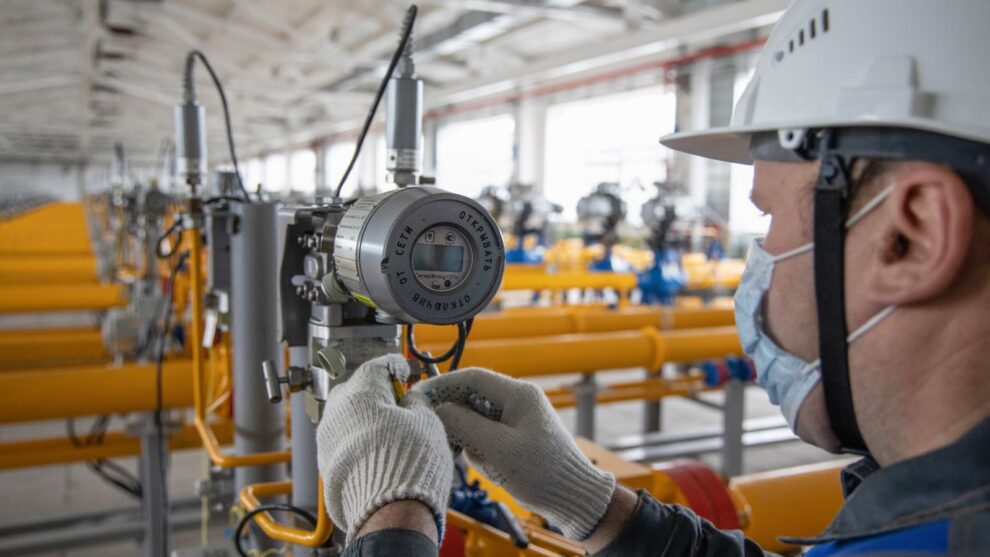Germany has completely filled its winter gas storage and could start withdrawing volumes this month if the weather turns cold, storage operators group INES said on Tuesday.
“Germany’s gas caverns have been completely filled (ahead of winter) for the second year running,” INES said in a statement accompanying monthly sector statistics.
“Only extremely cold temperatures could lead to a shortage of supply.”
Boosting storage was one of Germany’s key responses to being mostly cut off from Russian pipeline gas last year.
It has also increased its purchases of liquefied natural gas (LNG) and cut consumption, which helped cool off price spikes last winter.
INES said a legal requirement of 95% of storage filled by Nov. 1 had been exceeded and its next target is to assure 40% remains as of Feb. 1.
German underground storage caverns hold 255.2 terawatt hours (TWh) of supply, technically equivalent to 100.14% of capacity, the official website of European storage operators group GIE showed.
EXTREME COLD
Modelling for scenarios of extreme cold, INES said Germany could face a gas supply gap of 9 TWh in January, 15 TWh in February and 12 TWh in March, each 1 TWh lower than projections it gave a month ago.
Reducing use will be important again this winter, INES said.
It also recommended that Germany add to its new floating terminals for regasifying imported sea-borne LNG at Brunsbuettel, Wilhelmshaven and Lubmin, as well as using more west-to-east pipeline and storage capacity inside continental Europe.
Germany has benefited from increased pipeline supply from countries such as Belgium, Norway and the Netherlands, as well as from increased LNG shipments into wider Europe.
INES’ members, which include the Astora company within the SEFE group, VNG Gasspeicher, Uniper, and RWE , hold 25% of the European Union’s gas storage capacity.
Source : Zawya
















